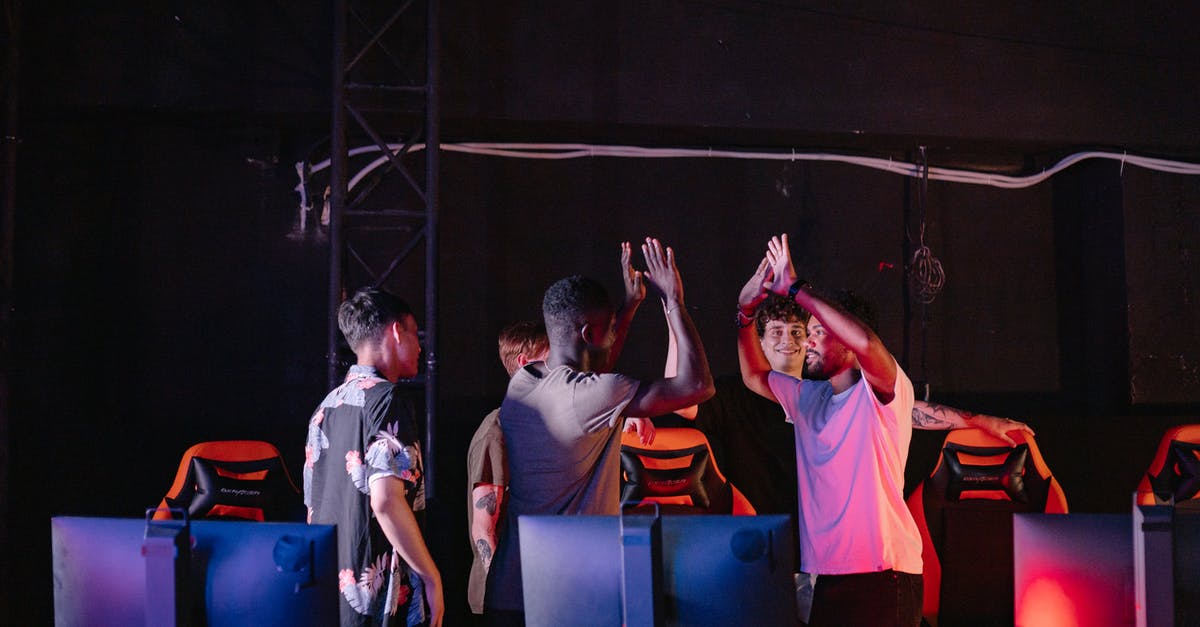Best way/temperature to get maillard reaction on meat/steak

Background
In relation to this question/answer. What temperature does the Maillard reaction occur?
The answer to the question above states that over 400F/200C there is basically no maillard, only caramelization. It also states in the chart that you get most flavor full result between 250F/110C and 300F/150C. This goes against what I believed; I though the hotter the better (within reason). Therefore I use a blow torch. But maybe what I like is a mix of some maillard and some caramelization.
Question
With respect to the temperatures described in the previous question. Would my meat taste better if I used a 300F/150C pan instead of a very hot blow torch?
Best Answer
The meat will pass through various temperature ranges when heated. The moisture in the surface layers of the meat will gradually evaporate, and once they are dried out, the temperature will start to rise more rapidly.
I think the balance of caramelization vs. Maillard also has to do with specific proteins and sugars available, but you're right -- around and above 400F/205C, caramelization proceeds fast enough that there's generally little opportunity for Maillard (the sugars break down too fast).
In any case, the issue isn't how hot your heat source is as much as how long the surface stays within particular temperature ranges. If your meat surface actually gets significantly above 400F/205C for a significant period of time, it will start to burn. But even after a couple minutes in a pan, the meat surface may not be equal to the pan temperature. Why? Because generally moisture is constantly escaping from the layers immediately below the surface, and that moisture will keep the interior below the boiling point (212F/100C). That lower temperature steam needs to be heated as it approaches the surface, which will keep the surface temperature from rising too fast. In a very hot pan or under a very hot heat source, a significant dry crust will eventually form and ultimately start to burn if the heat goes on long enough.
To get to your exact question -- if you use a 300F/150C pan, the following things will happen:
- You'll lose a lot of heat immediately when dropping the food into the pan, lowering the pan surface temperature temporarily.
- Now you might have a pan surface that is only close to boiling water temperature or something, and that's not high enough to cause significant Maillard browning in a reasonable amount of time.
- The surface of the meat will gradually come up to boiling temperature, requiring a fairly large amount of energy. That won't allow the pan surface temperature to recover significantly for a while.
- Once the meat surface hits 212F/100C, the water in the surface meat needs to boil off. It takes a huge amount of energy to evaporate water compared to the amount of energy it takes to raise the temperature. While that's going on, the meat will get "stuck" at boiling temperatures for a while. (This is quite visible, for example, when you crowd a pan with too much meat, and you get moisture pooling in the pan for a couple minutes that has to burn off.)
- Note, so far, you don't get any significant Maillard browning going on, and no caramelization at all. If the surface meat has taken too long up to this point, it can acquire a boiled taste/texture that may not be optimal and may change the kinds of browning reactions that eventually do occur. Eventually, enough water boils out and the surface layers become drier.
- Once enough surface moisture is boiled out of the meat, it can resume rising in temperature, which will happen much more quickly. But if the pan is still only going to a maximum temperature of 300F/150C, it will take some time. (Remember that the surface of the meat is still in contact with much cooler interior layers, which still have moisture that's generally not at a temperature more than 212F/100C.) And heat transfer rate depends on the difference in temperature between two things. So if the pan is 300F/150C and the steak is 212F/100C, you'll get a relatively slow temperature rise, and the closer the meat gets to 300F/150C, the slower the temperature will rise.
- Eventually, after a few minutes, you'll get close enough to 300F/150C that Maillard reactions will occur noticeably, and you'll get some browning. Even then, the browning may take a while, because you still have the moisture coming out of the meat, which would probably keep the surface layers below 300F/150C.
Now, if you start out with a pan that's at 500F/260C (or even higher), the pan surface will transfer its heat (probably dropping down to 200-300F/95-150C in the process), and accomplish steps 1-5 in a matter of seconds instead of a matter of minutes. At that point, the layers of the pan underneath the surface will still have a lot of heat (since they started at 500F/260C instead of 300F/150C) and will transfer heat back to the pan surface. So after the first few seconds, the pan surface rapidly begins to rise again getting to 300F/150C fairly quickly, which will produce maximum Maillard reactions. Wait a little while, and you'll start getting significant caramelization. Wait further, and the meat will burn.
What's the ideal pan temperature to begin to get maximum Maillard in a brief time? It really depends on the material of the pan and its size and thickness, as well as the amount of meat you plan to drop into the pan (which will influence how much heat is needed to get through steps 1-5 quickly). When starting out with a superhot pan (say, 700F/370C or so), you'll get a lot more caramelization, less Maillard, and you'll have to be careful not to burn the meat if you wait too long to turn. With a pan that's only 400F/205C to start, you should get more Maillard, but it will take longer to brown, which may not be ideal if you want to keep the interior of the steak cooler (medium rare or whatever). With a heavy pan that transfers heat slowly (e.g., cast iron), I'd generally go with something around 550F/290C personally, which seems to be a reasonable balance. If the meat is going to crowd the pan, I'd go higher to burn off all that excess moisture as quickly as possible.
[Edit: As rumtscho noted in comments, the type of range -- gas, electric, or induction -- could also affect heat transfer and recovery time for a pan to come back to high temperature. Also, there are many specific properties of materials that will influence the heat transfer rate and recovery time, including the rate heat moves through the metal (thermal conductivity), the amount of heat stored in the pan (heat capacity), the rate heat conducts out of the pan surface (diffusivity), and the rate that radiative heat comes off the pan, which is mostly dependent on color (emissivity). Note that the heat capacity and thermal conductivity are often combined in one number to give a sense of "thermal inertia" or "effusivity."]
With a blowtorch, the temperature is obviously quite high, and the heat will be continuously replenished (unlike a pan, which has a temperature "recovery time"). You can go through steps 1-5 almost instantaneously. Whether you get more Maillard or more caramelization will depend on how hot the flame is and how close you hold it to the meat surface. You might experiment with backing the torch away just a bit and use it for a slightly longer time. It might change the effect and flavor profile slightly, but I've never played around with this much myself.
Pictures about "Best way/temperature to get maillard reaction on meat/steak"



Quick Answer about "Best way/temperature to get maillard reaction on meat/steak"
To get a Maillard reaction, the surface temperature of the steak needs to be around 350 degrees F (177 degrees C), Potter said. (An infrared thermometer can give the temperature of surfaces, he added.)What temperature is required for Maillard reactions?
The reaction is a form of non-enzymatic browning which typically proceeds rapidly from around 140 to 165 \xb0C (280 to 330 \xb0F). Many recipes call for an oven temperature high enough to ensure that a Maillard reaction occurs.How do you Maillard a reaction to a steak?
Searing a Steak Using the Maillard Reaction The three factors in the Maillard Reaction are heat, moisture, and time. You need a source of continuous heat above 310\xb0F, a relatively dry cut of meat, and enough time to prepare\u2013at least 45 minutes.How do you get the best Maillard reaction?
Heat, moisture, and time may be key to getting the Maillard reaction going, but without proteins and sugars to work with, it simply won't happen. Proteins are long chains of amino acids, crumpled up like wads of paper. Some of them are Maillard-susceptible, meaning they really love to bond with sugars.At what temp does meat caramelize?
This transformation can be achieved by cooking at temperatures over 250 degrees F. Since water cannot be heated above 212 degrees F (i.e., the boiling point), meat needs to be cooked in a nice dry environment to reach the 250 degree F mark.FOOD - DELICIOUS SCIENCE | The Maillard Reaction: The Science Of The Sizzle | Clip | PBS Food
More answers regarding best way/temperature to get maillard reaction on meat/steak
Answer 2
According to the culinary textbook 'On Cooking' (ISBN 978-0-13-715576-7) page 310, you want a temperature higher than 300°F (149°C). Studies have proven that flipping a steak every 30 seconds will have a better effect visually and flavour-wise.
Sources: Stack Exchange - This article follows the attribution requirements of Stack Exchange and is licensed under CC BY-SA 3.0.
Images: Karolina Grabowska, Yan Krukov, Yan Krukov, Yan Krukov
